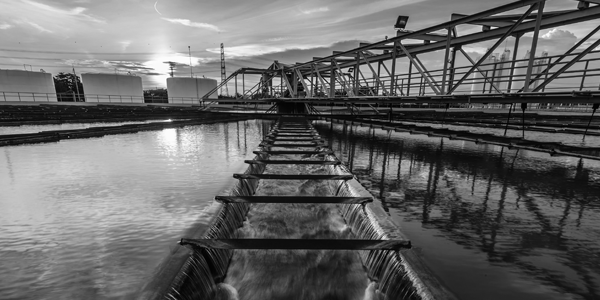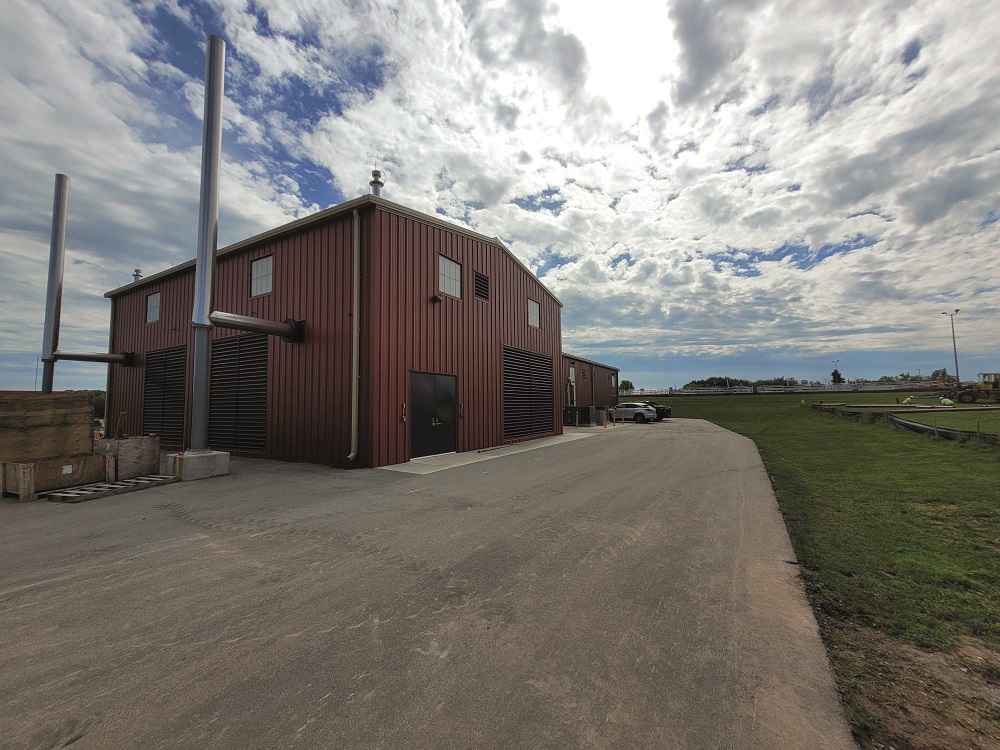
Overview |
||
|---|---|---|
| Challenge: | A large regional water treatment plant wanted to ensure that water would continue flowing to more than 200,000 residents even if the electric utility failed. | |
| Solution: | Cummins provided a complete standby power system solution that included two 2.7 MW diesel generator sets for a total capacity of 5.4 MW as well as transfer switches and paralleling system. | |
| Result: | Cummins delivered a complete turnkey system, providing reliable standby power in addition to seamless power transfers that kept water flowing to all their customers. Cummins also implemented money saving utility paralleling options, which have helped reduce the plant’s electric bills and cost of water. | |
A Michigan water treatment plant in need of reliable standby power
A large regional water treatment plant in west-central Michigan, not far from the shores of Lake Michigan, wanted to ensure that water would continue flowing to more than 200,000 residents even if the electric utility failed, so it installed a standby power system from Cummins Power Generation Inc. to prevent service interruptions. The standby system also helps the water treatment plant save money on its electric bills by generating its own lower-cost power during the electric utility’s summer peak demand periods— when lawn watering pushes water demand to as much as 80 million gallons per day.
The Cummins Power Generation solution
The standby power system the water treatment plant chose included two PowerCommand® 2.7 MW diesel generator sets for a total capacity of 5.4 MW. In addition to the standby generators, the water treatment plant has two separate utility feeds from different substations for additional reliability.The local Cummins Power Generation distributor in Michigan, supplied the power system.
According to the plant’s maintenance supervisor, the generators provide dependable standby power for continuous flow of water to the community’s customers. “Basically, we’re using the generators as an uninterruptible power source so that if we have a power outage—or have our power curtailed by the utility for load-shedding during the summer peak—we can run these two generators and supply enough power to keep the water flowing.” The plant receives an incentive for allowing the local utility to interrupt electrical service and help reduce the utility’s peak demand.

This saves the facility about 15 percent off its electric bills—or about $150,000 to $300,000 per year. We’re using the generators as an uninterruptible power source so that if we have a power outage or curtailment we can run these two generators and supply enough power to keep the water flowing.
The power system’s dual role
There are two circumstances in which the generators need to produce power for the plant. One is when both utility feeds fail due to a widespread power outage. The other is when the utility asks the plant to remove all or part of its load from the grid during days with high peak demand.
Power capacity to keep the facility running during peak demand
In the case of a utility outage, the generators are programmed to start after a 10-minute delay. This allows time for various valves to close before the pumps are restarted. During the 10-minute switchover, water storage tanks throughout the distribution system prevent any noticeable decrease in water flow to consumers. Whenever power to the plant is to be interrupted because of summer peak demand, the electric utility notifies the plant 24 hours in advance. During any given summer, the power curtailments during peak demand periods may happen only six or seven times, but they occur during the lawn-watering season when water demand is the highest. However, the generators have enough power capacity to operate the plant even when the demand for water is high. Under the rate agreement with the utility, the plant also is required to limit the amount of power it consumes between the hours of 11:00 a.m. and 7:00 p.m., Monday through Friday. If the plant needs more power during that timeframe, it has the ability to generate power in parallel with the utility and just shed a portion of the plant’s load.
Transfer system avoids breaks in power
When the utility requests the plant to switch to self- generated power, the plant starts the generator sets and makes the transition using a paralleling load transfer system. This style of transfer equipment parallels the generator and the utility together for a brief period during the transition, and then gradually ramps the load onto the generators and off the utility. This system reduces stress on components and avoids a break in power flow.
Since the Cummins Power Generation standby power system was installed, it has not only kept the water flowing to more than 200,000 customers during utility outages, it has helped reduce plant’s electric bills and the cost of water.
For more information about standby power systems for municipal water systems and other mission-critical applications, contact your nearest Cummins Power Generation distributor or visit www.power.cummins.com.
THE POWER CHALLENGE Located on the Fox River in De Pere, a southern suburb of Green Bay in Wisconsin, the NEW Water wastewater treatment facility provi...
THE CHALLENGE The southern US state of Louisiana is no stranger to hurricanes. In the fall of 2020, it endured its most active storm season ever, including t...
Overview Challenge: Provide an emergency standby power system solution that would support the expansion of the water treat...


